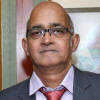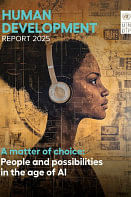Battlefield Bengal and bruised Vidyasagar
When polling in India's parliamentary elections concludes on Sunday (May 19), the entire national focus will be firmly on nine remaining constituencies out of total of 42 in West Bengal even though voting will also take place in some other states, including Uttar Pradesh, electorally the most crucial state. The violent clashes between activists of the Bharatiya Janata Party and the Trinamool Congress and smashing of the statue of Ishwar Chandra Vidyasagar, Bengal's renaissance man, during campaigning by BJP President Amit Shah in Kolkata on Tuesday and the Election Commission's unprecedented decision to cut the campaign time in West Bengal by almost 24 hours ahead of schedule because of "fear psychosis" prevailing in the state, have ensured that West Bengal remains the major political topic of discussion in the seventh and final phase of voting.
West Bengal is the only Indian state where all six phases of polling so far have been marred by sporadic skirmishes between supporters of the Trinamool Congress and the BJP, reflecting the inch-for-inch battle between the two parties. But violence has not stopped the state recording a high turnout of voters (more than 70 percent) in all six phases. For the BJP, West Bengal is key in this year's election not only because it sends the third highest number of members to the Lok Sabha after Uttar Pradesh and Maharashtra, but also because this is a state where the party senses an opportunity to gain a substantial number of seats which could provide it a buffer for the setbacks the party may suffer in northern and heartland states after its electoral performance had peaked in the previous national poll five years ago.
Political violence has been a constant feature of West Bengal in the run up to a regime change and every time an established set-up came under intense pressure from its rivals in the state. This is a trend witnessed since the rise of the Naxalite movement in the early 1960s and through the 1970s when the state passed through a violent uprising and clashes between the two rivals of the Communists—Naxals and the Communist Party of (Marxist)—and the Congress. There was a long period of relative calm, at least in the urban areas, during the Left Front government which came to power in July 1977 even though violence continued in rural areas as the Left went about consolidating its political hold there. That calm began melting early this century as the Left itself struggled to stave off its existential crisis that began creeping in following a severe erosion of its ideological postures in a capitalistic set-up and Trinamool Congress became a serious challenger to the Left. This culminated in May 2011 when the Trinamool under Mamata Banerjee voted out the Left in the assembly polls.
In this year's parliamentary elections, the BJP has gone all out to win in Bengal putting the Trinamool under intense pressure which has been building up for the last five years. The turnout at poll rallies of Prime Minister Narendra Modi and Amit Shah in West Bengal have surprised many political observers. The BJP has deployed its cadres in West Bengal having brought them from neighbouring states Jharkhand, Assam, Tripura and Odisha. Among the leading BJP functionaries who have camped in West Bengal are General Secretary Ram Madhav from Andhra Pradesh, national secretary Sunil Deodhar, Assam Finance Minister Himanta Biswa Sarma, India's Oil Minister Dharmendra Pradhan from Odisha. Madhav, Deodhar and Sarma are credited with crafting the BJP's historic victory in assembly elections in Tripura two years ago ending decades of rule by Left parties. To top it all, Modi and Shah visited Bengal for electioneering almost every week since the first phase of polling on April 11.
The Trinamool Congress is facing a stiff challenge from the BJP in West Bengal and Chief Minister Mamata Banerjee has in a recent interview admitted the saffron party has emerged as her principal challenger in the parliamentary elections. Ninety-nine percent of Mamata's election speeches have targeted the BJP even though the Congress Party and Left parties have more seats in the state legislature from West Bengal and in the Lok Sabha. As the Left parties have been increasingly getting pushed to the margin of Bengal politics, it is the BJP which has filled the vacuum with a discernible shift particularly among the urban middle class and in the tribal belt of Purulia, West Midnapore, Jhargram and Bankura to the saffron outfit, where the Leftist ideology had earlier held sway.
A large chunk of the Left's voter base—estimated to be around 30 percent five years ago—had veered to the BJP. The tribal areas are among the most economically impoverished regions of West Bengal and ground reports suggest widespread resentment among people there due to lack of jobs and corruption. These are also the areas where the RSS and its affiliates Vishwa Hindu Parishad and Bajrang Dal have made their presence not only through its religious events but also a network of schools for Dalit children. A sizable chunk of Dalits, who constitute about 24 percent of the state's population, have gravitated towards the BJP after the decline of the Left.
In fact, the BJP's strategy for West Bengal has been to expand its footprints through a mix of nationalism, Hindutva and development. The Citizenship Amendment Bill and the National Register have been key components of the BJP's campaign narrative in Bengal considering that lakhs of people in the state have migrated from East Pakistan and Bangladesh at different points of time. The Trinamool Congress responded by using a blend of sub-nationalism like Bengal's secular cultural and political ethos and its own soft Hindutva by taking out Ram Navami processions to counter those of the BJP. A classic example of the Trinamool resorting to sub-nationalism is making use of the desecration of Vidyasagar's sculpture on Tuesday as its plank accusing the BJP of insulting Bengal's leading educationist who gave "Barnaporichay" to children learning to read and write and a social reformer who championed widow marriage. Mamata herself participated in several street marches in Kolkata and her party took out rallies across the state in protest against the smashing of Vidyasagar's statue. The Trinamool Congress is also banking on its strong organisational base and a slew of social welfare measures to counter the BJP.
The Trinamool Congress seems determined to stop the BJP's surge in Bankura, Midnapore and Jhargram by fielding its veteran leaders as candidates in the election including Subrata Mukherjee and Manas Bhuniya who is pitted against West Bengal BJP Chief Dilip Ghosh. The Trinamool also hopes to cash in on the Muslims who constitute 30 percent of Bengal's population and who have veered to the party after the ouster of the Left from power in May 2011.
But the BJP is not without some imponderables in West Bengal. As Muslims were courted by the Trinamool Congress, the BJP pushed aggressively its Hindutva plank and accused Mamata's party of minority appeasement that got traction among a section of West Bengal's society. Can the party which won just two parliamentary seats in the state in 2014 substantially increase its vote share in this election?
The rise in vote share does not automatically lead to an increase in the number of seats. The BJP's surge and the Trinamool's dour fightback have set the stage for a bruising electoral battle that has the potential for a violent turf war in West Bengal in the days to come. The cycle of violence is unlikely to end after the parliamentary polls. The assembly elections in the state are just two years away and the race for Bengal raises the spectre of more violence as the Trinamool Congress seeks a third consecutive term in power and the BJP presses ahead to change that.
Pallab Bhattacharya is a special correspondent at The Daily Star.

 For all latest news, follow The Daily Star's Google News channel.
For all latest news, follow The Daily Star's Google News channel. 



Comments